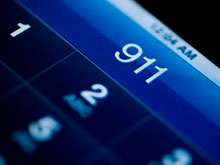As children, we were taught to call 9-1-1 whenever there is an emergency nearby. It is something that has been ingrained in us. We call them first for a reason: we expect them to help us, and help us quickly. But what if the police officer, firefighter or EMT paramedic was unable to respond to your crisis because they didn’t know how to get to your location? Thanks to GPS, we don't need to worry about that anymore.
what if the police officer, firefighter or EMT paramedic was unable to respond to your crisis because they didn’t know how to get to your location? Thanks to GPS, we don't need to worry about that anymore.
GPS (global positioning system) has taken the guesswork out of navigation and made directions immediately accessible. The accuracy of the system has made GPS an asset to military, stock market users and emergency responders. The atomic clock’s ability to be within a millisecond can provide this industry with the precision to make calculated decisions with confidence.
What is GPS and How Does it Work?
GPS is made up of a series of satellites that orbit the Earth, transmitting radio signals down to GPS-enabled devices. The satellites send information such as location and time, which is then used to determine the distance of the receiving device in relation to the satellite.
All satellites come equipped with an atomic clock that allows for the most accurate measurement of time possible, allowing enabled devices to properly detect how long its takes for the device to receive the radio signal from the satellite. Once the device has collected how long it takes to receive signals from four satellites, it can properly calculate the receptor’s location.
GPS and Emergency Response
GPS provides the most accurate and up-to-date location available, making it an invaluable tool for 9-1-1 communications. When first-responders are tasked with getting to the emergency location as quickly as possible, instantly receiving a clear and traceable location is essential, as a matter of seconds can mean the difference between life and death.
GPS is not only for determining stationary positions, though, as the system can also update receivers with all movements, making the system ideal for tracking the movements of those involved in high speed chases or determining alternate routes for EMT staff transporting injured patients.
In emergency situations where emergency responders are depended on, having quality GPS technology is crucial to ensuring the safety and well-being of those involved in the incident.
If you are considering updating your 911 communication solutions, contact Chicago Communications today or request a free consultation below.


